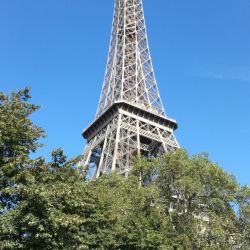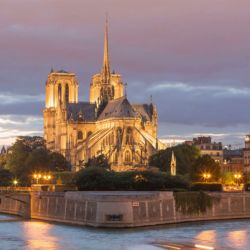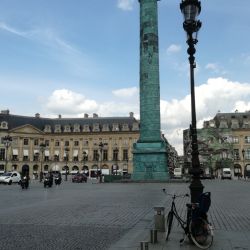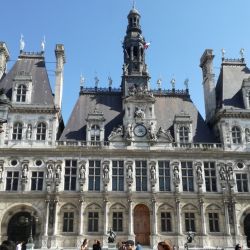IV "arrondissement" of Paris
The Hôtel de Ville de Paris is located in the 4th arrondissement, near the Seine. It is classified as a historical monument of France.
Several hundred artists participated in the project, which gave the showy decoration accompanied by numerous sculptures. The party hall is thirteen meters high and represents the most beautiful setting inside the building.
In Paris there are 20 other municipalities, one for each arrondissement, the seat of the respective district councils.
The cathedral was begun in 1160 and largely completed by 1260, though it was modified frequently in the following centuries. In the 1790s, Notre-Dame suffered desecration during the French Revolution when much of its religious imagery was damaged or destroyed. Soon after the publication of Victor Hugo's novel The Hunchback of Notre Dame in 1831, popular interest in the building revived. A major restoration project supervised by Eugène Viollet-le-Duc began in 1845 and continued for twenty-five years. Beginning in 1963, the facade of the Cathedral was cleaned of centuries of soot and grime, returning it to its original color. Another campaign of cleaning and restoration was carried out from 1991-2000
One of a number of so-called “kilometre zeroes” around the world, Paris Point Zero marks the supposedly exact center of the city or country. All other locations are thought to be measured as a distance radiating from this point. Paris’ center is marked by an octagonal brass plate that is set rather unremarkably into the concrete of the square. due to the marker’s low profile, some visitors have a hard time even finding it, but often times when they do, it has become customary to pay respects in any of a number of ways.
A first project for a commemorative column, one that would commemorate the Fall of the Bastille, had been envisaged in 1792, and a foundation stone was laid, 14 July 1792; but the project never got further than that. The circular basin in which its soclestands was realised during the Empire as part of the Elephant of the Bastille, a fountain with an elephant in its centre. The elephant was completed to designs by Percier and Fontaine in semi-permanent stucco, but the permanent bronze sculpture was never commissioned due to pinched finances in the latter days of the Empire. Its low base has been retained to support the socle of the column.
The Temple du Marais, sometimes known as the Temple Sainte-Marie, or historically, as the Church of Sainte Marie de la Visitation, is a Protestant church located in the 4th arrondissement of Paris, in the district of Le Marais at 17 Rue Saint-Antoine. It was originally built as a Roman Catholic convent by the Order of the Visitation of Holy Mary, whose sisters were commonly called the Visitandines. The church was closed in the French Revolution and later given to a Protestant congregation which continues its ministry to the present. The closest métro station is Bastille








